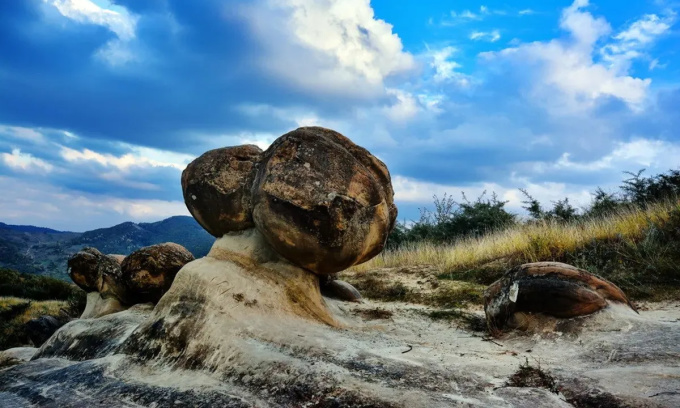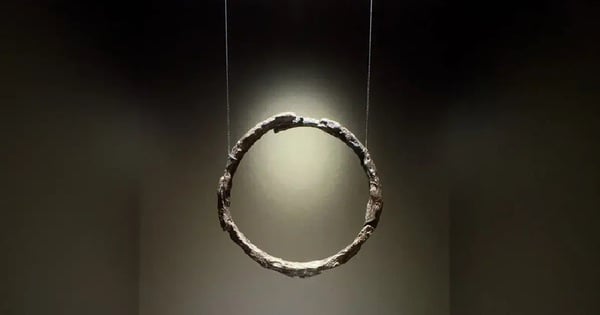Romania Trovant stone, also known as "living stone", reacts with rainwater causing its interior parts to push outward, appearing to grow or give birth.

Strange "living stones" in Romania. Photo: aaltair/Shutterstock
The town of Costești, Romania, is home to some very strange rocks. Unlike the typical static state of rocks, they slowly extrude their inner parts, even growing as if they were alive. They are called trovants, or “living rocks,” IFL Science reported on September 3.
Trovants have attracted the attention of many geologists and tourists over the years. There is some debate about what these strange rocks are, but many believe that trovants are sandstone blocks with solid layers of sand encasing them. They are harder than the surrounding rocks, so when the softer surrounding bedrock erodes, they are able to protrude.
When it rains, rainwater reacts with the minerals that make up the rock, causing parts of it to leak out and make the rock appear to grow. This can create bubble-like protrusions that look like the rock is giving birth to a baby. However, this geological process is extremely slow. Experts estimate that trovants only “grow” less than 5 centimeters in 1,200 years.
"Trovants are typically ovoid or spherical in shape, although they can take on many different shapes. Their history is quite simple. Seven million years ago, there was a plain where the quarry is today. This plain contained sediments, including sandstone and siltstone, that were deposited and transported here from all over the continent by a prehistoric river. Many minerals were then dissolved in the solutions that flowed in this gravel and sand basin," said Florin Stoican, co-manager of Buila-Vanturarita National Park.
"Minerals act as cement, binding together different sedimentary grains. Today, there are trovants of very diverse composition. Some are made of sandstone, others of gravel," Stoican added.
Thu Thao (According to IFL Science )
Source link












































Comment (0)